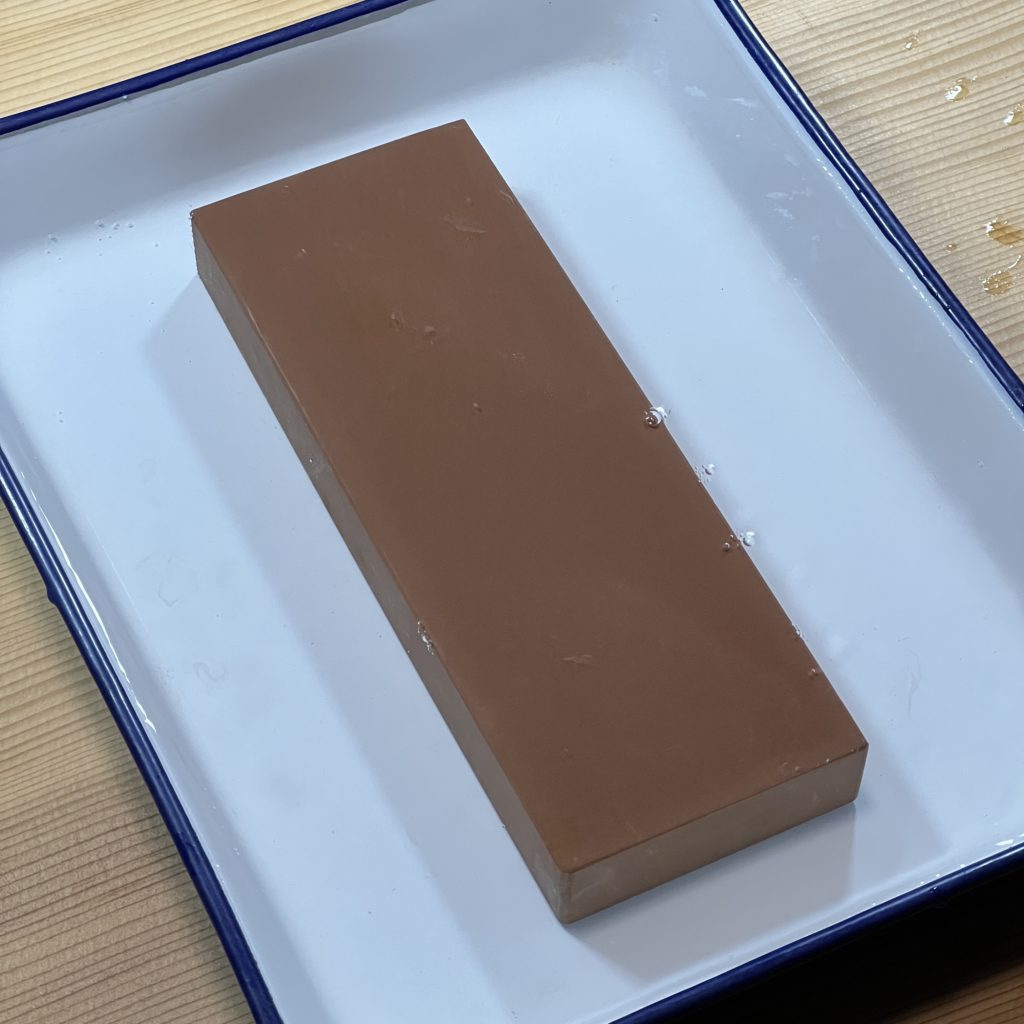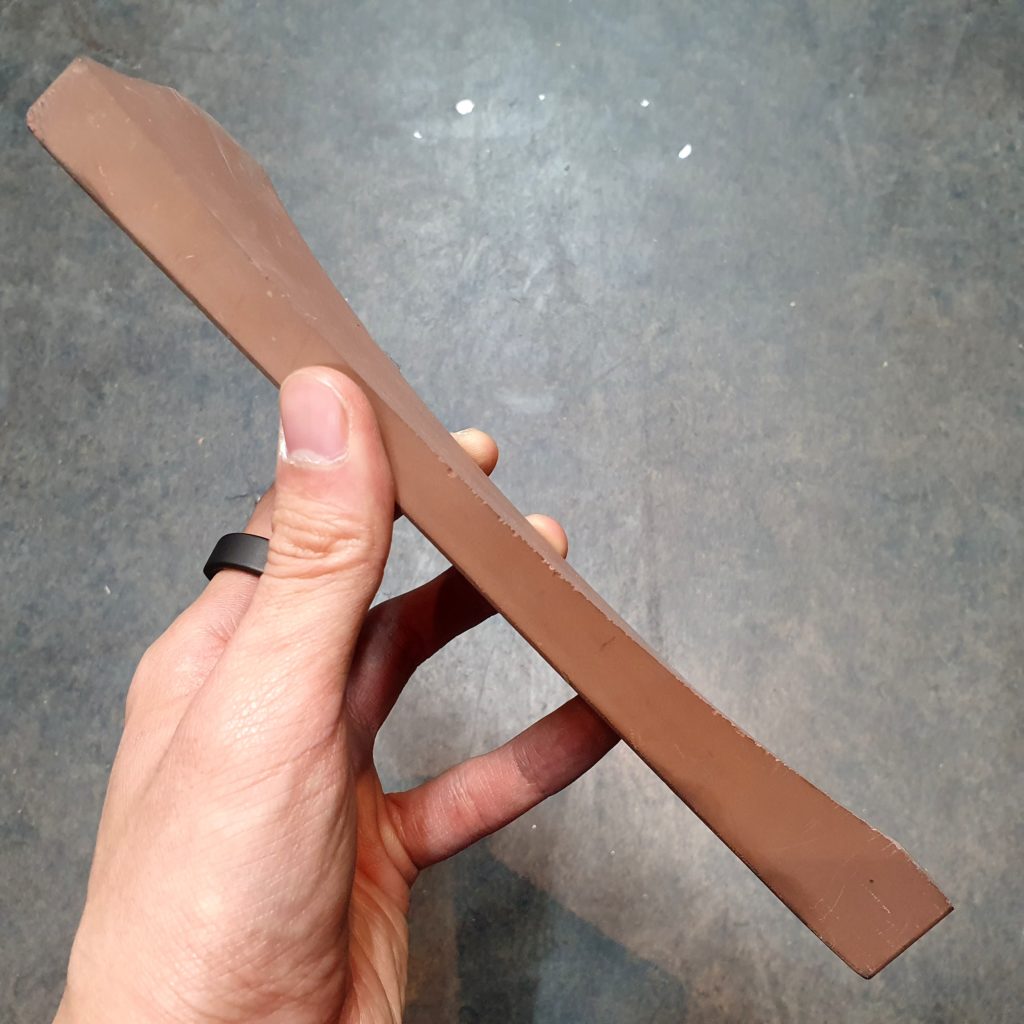Precautions for use
・Do not cut hard things such as frozen foods, fish or chicken bones.
・Applying impact or force may cause the blade to spill or break.
・Regardless of whether the blade is made of carbon steel or stainless steel, rinse with water as soon as possible after use and wipe dry thoroughly before storing.
・Please note that leaving the blade to dry naturally with water remaining will cause rusting and lead to reduced sharpness and blade spillage.
Preparation before sharpening
Soak the whetstone in water

Soak the whetstone in water and begin sharpening when it is thoroughly moistened.
If air bubbles appear when the whetstone is soaked in water, soak it thoroughly until no more air bubbles appear.
If bubbles do not appear, the whetstone does not absorb water or does not need to be soaked in water.
In this case, the stone can be used immediately after thoroughly wetting the surface.
Since the handling method differs depending on the whetstone, and some whetstones should not be soaked in water for a long period of time, please be sure to check the instruction manual that comes with the whetstone before use.
Checking the condition of the whetstone
Before starting sharpening, be sure to check that the whetstone is flat.
Many people who cannot sharpen well use a concave whetstone, so check to see if the surface of your whetstone is flat, and if it is concave, use a flattening stone to sharpen it until it is flat.

If the surface is heavily dented as shown in the photo, it is recommended to purchase a new grinding stone as it will take a very long time to completely flatten the surface.
How to flatten

For beginners, it is recommended to draw radial lines on the whetstone as shown in the photo, and then straighten the surface until all the lines disappear cleanly.
The point is not to exert excessive force.
When flattenig the surface, apply moderate force to the center of the correcting wheel and be aware that the wheel should glide evenly across the surface.



The surface of the whetstone should be adjusted back and forth, left and right, and at an angle to ensure even and even adjustment.
It is important to flatten the surface not only before sharpening, but also between sharpenings to maintain the flatness of the whetstone.






